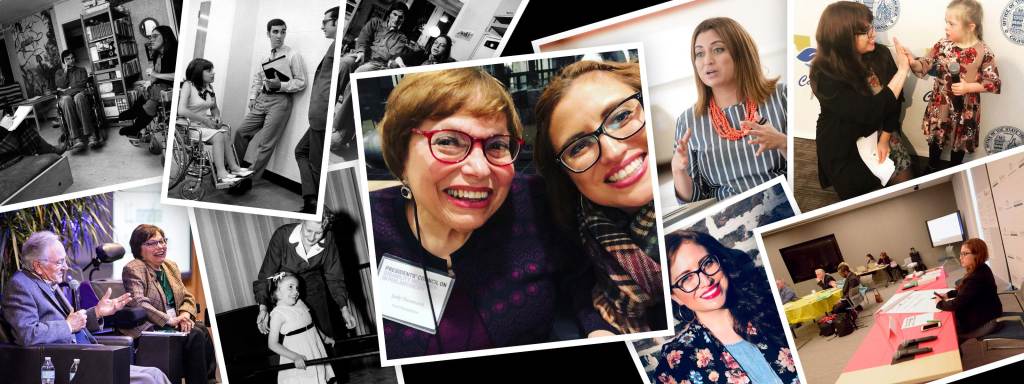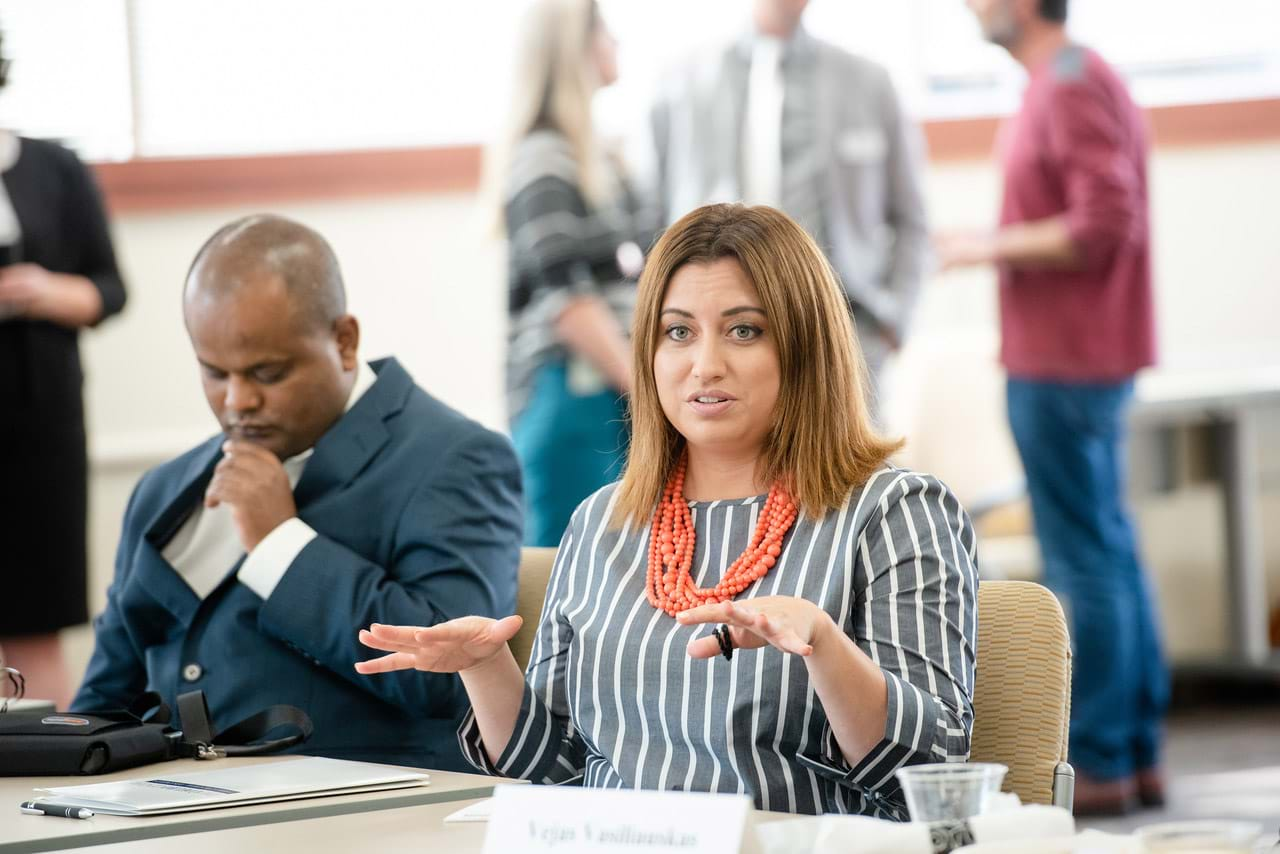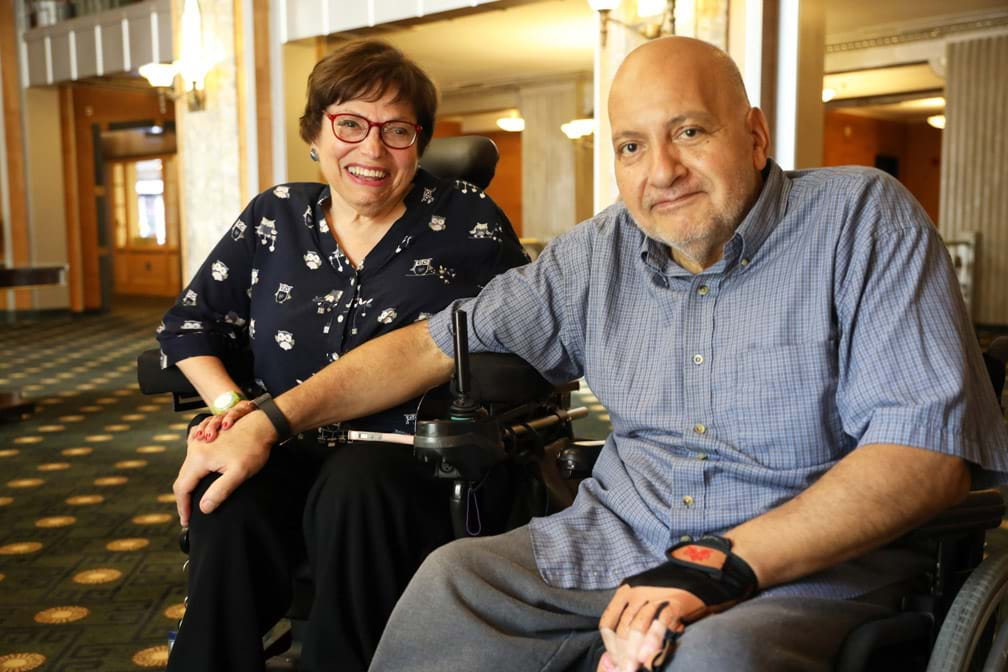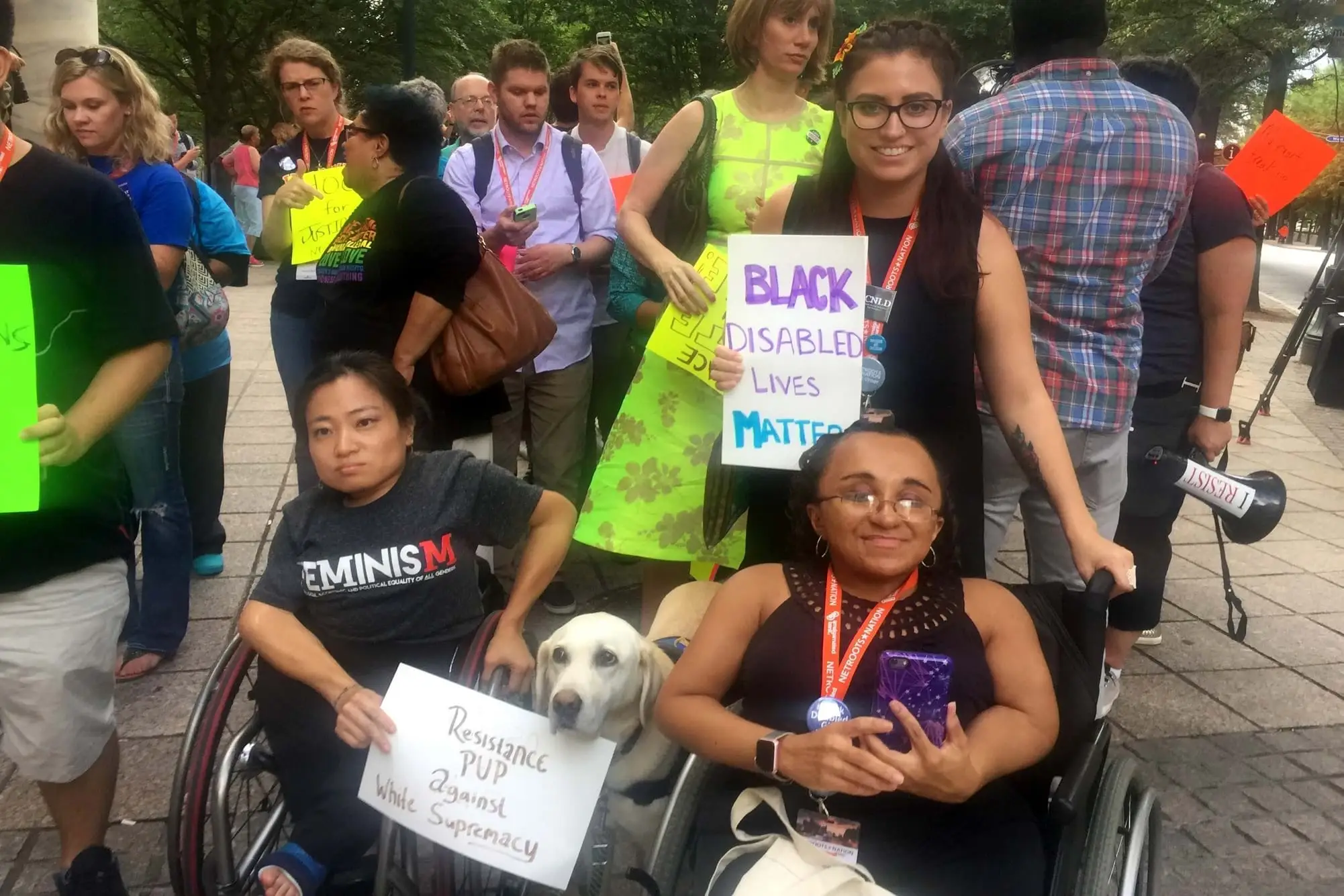
It all started back at Camp Jened, a little known summer haven at the foot of New York’s Catskill Mountains. There, among the bunks, a group of teenagers with disabilities, who had come to camp looking for camaraderie in the 1960s, began to lay the foundation for a political awakening that would lead to the Americans with Disabilities Act (ADA) of 1990.
This piece is part of Disability Demands Justice, a dynamic, ever-evolving hub to deepen our understanding of how disability intersects with social justice.
As we celebrate the 30th anniversary of the Americans with Disabilities Act, a federal law that made discrimination on the basis of a disability illegal, we must recognize that it is a major milestone not just for people living with a disability today, but for all Americans. The landmark law made clear that disability rights are intricately tied to civil rights and afforded disabled people the same protections outlined in the Civil Rights Act of 1964. Yet with invisibility and stigma still the norm 30 years later, the fight for justice is far from over.
From those early days of Camp Jened chronicled in the Ford-funded Crip Camp to the passage of Section 504 of the Rehabilitation Act of 1974, the first disability civil rights law, the road to the ADA was long and it required people with disabilities to put their differences aside to harness their collective power to organize and define a movement.
Back then, the community had to shift the narrative of disability from a medical disorder to a mandate for justice. Today, the disability rights movement continues to evolve, tackling the root causes of inequality at the intersection of disability, race, gender, class, age, and sexual orientation. By embracing the diversity of the movement and putting queer, disabled people of color at the forefront, they are fighting for sustainable, collective solutions to dismantle inequality for all Americans.

To reflect on the legacy of the ADA, the evolution of the movement over the years, and the critical work ahead, we’ve brought together two leaders across the generations: Judy Heumann, 72, and Katherine Perez, 35.
Heumann, a counselor at Camp Jened and author of Being Heumann, has been at the center of the fight for disability rights for 50 years, playing an integral role in the passing of Section 504, the ADA and the many policies that followed. Perez—a queer, Mexican-American attorney and activist—is paving the way for a new generation of disability justice leaders as the executive director of the Coelho Center for Disability Law, Policy, and Innovation at Loyola Law School where she also teaches Disability Law.
Together, they make the case why there is no justice without disability.
ADA and its legacy
Heumann:
I’m 72 years old. And the reason I mention that is when I was growing up in Brooklyn, New York, there were no disability laws. There was no 504, there was no Individuals with Disabilities Education Act. There was no Americans with Disabilities Act.
When you look at the 60s and many of the advancements that came about in the civil rights movement, disability was not a part of that landmark piece of legislation. The primary focus of the discussion around disability was the medical and charity model. Help the hopeless, the helpless, and the cripple. It wasn’t looking at what we were being denied as disabled individuals with different disabilities from different racial backgrounds, different religious backgrounds, different sexually-oriented backgrounds.
Passing the ADA meant that we had to get our House of Representatives and our US senators to understand that discrimination was something that was occurring in every part of every state, in every state in the union. We needed a national piece of legislation that clearly stated that discrimination on the basis of disability would be illegal in the public and private sector and that we needed to remove the barriers that have plagued us across the country.
Perez:
The ADA has been an important milestone that helps us continue to advance the rights of disabled people. I keep reflecting back, Judy, on how you took your case to court through the district court system in New York and you didn’t have the ADA, you didn’t have 504, but now we do.
Having these laws on our side today allows us to push the boundaries even further. Recently, I put together a workshop with law schools across the nation. We had deans, faculty, and students from twenty-some of the top law schools like Harvard, Yale, Berkeley, New York University, Loyola Law School, UCLA, and a lot of regional schools from Miami to Pittsburgh.
These top legal institutions were talking about how they wanted to do more, how they wanted to push the boundaries, how the ADA was the floor, not the ceiling, and how we want to change the climate and the culture. A big part of how I lead in the Coelho Center is through an intersectional justice lens. I made sure that intersectionality was at the core of these conversations. To see these mostly non-disabled, mostly white higher-ups in legal educational institutions talk about intersectional justice, it was pretty incredible.
We’re getting people in power to talk about disability justice and intersectionality. Now, the next step is getting more disabled people and queer disabled people of color into these positions as well. It’s a start, and we’re hoping to help move the needle.
Heumann:
Historically, it is very interesting to look at how disabled people have been separated at the onset of our disability. In the 60s and 70s, many of us were in segregated elementary schools, some people in segregated high schools. Many people, even if they went to college, didn’t have the opportunity to pursue an area of study that they were interested in.
So for example, I did not major in education, although I wanted to be a teacher. There were no laws at that time that said if you are qualified to be a teacher, you couldn’t be discriminated against based on disability. Even my disabled friends in high school said don’t major in education, major in the fields that are acceptable. At that point, it was mainly social work and speech pathology for young women and accounting and one or two other areas for men. Fast forward to Section 504 of the Rehabilitation Act and the ADA, now people are pursuing degrees in whatever area we are interested in and qualified for. It’s a huge difference.
There is no justice without disability
Perez:
Disability justice was coined by folks from the group, Sins Invalid, including Patty Berne, and a lot of queer and disabled people of color. An important part of disability justice is intersectional justice, centering the most impacted within our community. So that means queer, disabled people of color.
The ADA has done a lot for education, for higher education, for employment. But what about the criminal injustice system? What about immigration? What about some of these other areas that we traditionally think of as civil rights issues, but not through a disability lens?

Disability justice pushes us to think outside the box from where the traditional disability rights movement has been. An important component has always been about representation, ensuring that our leadership reflects our population and that we have more queer, disabled people of color in these positions.
Heumann:
The premise of the disability movement over the past 50 years is that, as disabled individuals, we are proud. Our disabilities are something that we don’t need to hide. That has enabled us to not only become much more engaged in leading a movement but also in paving the road that we want to travel by, as opposed to others paving a road that we did not want to travel on.
This is a critical first step to how we were able to get 504 signed and ADA passed. It necessitated disabled people to recognize we had to come together and that we had agency.
Perez:
I have been on quite a disability identity journey throughout my life. I was born in 1984, just a few years before the ADA and over a decade after Section 504. What you fought for, I was able to enjoy as I grew up. That’s why they also call us the ADA generation.
My sense of disability justice was formed because of my little sister, who has an intellectual disability, but in my youth, I didn’t have the language. I kept it very much hidden. Coming from a Mexican family, mental illness has been very stigmatized and still is. It’s something that I didn’t feel I could speak up about.
But when I was in high school, I became suicidal and finally came out to my parents as disabled. They plugged me straight into the psychiatric system. This was the second phase of my identity formation, and it was identifying as someone who has a mental illness.
Still, I didn’t really feel part of the disability community. It wasn’t until I went to law school that I started learning about the MAD movement, and learning the critical language I needed to use to talk about disability justice.
Since then, I’ve claimed my identity as disabled and come out a lot as disabled. Now more folks like me with non-apparent disabilities are claiming their place within our community.
Heumann:
Recent data came out that says 59 percent of college graduates with disabilities are from communities of color. That is an amazing figure. But many of those individuals, regardless of their race, are not identifying as having disabilities because of the stigma.
We also need to look at the onset of a disability. So many people are acquiring their disabilities in their 20s, 30s, 40s, 50s, 60s. People who acquire a disability grow up with the view that disabled people are not typically equal to non-disabled people. And that is, in large part, because of the lack of representation in the media about who we are as individuals and communities.
So we need the media to reflect the diversity of our communities. And that diversity includes age. We need people who will acquire disabilities, no matter what age, to have positive examples of who we are so that they don’t feel alone.
Perez:
There have been constraints to the ADA. We can’t legislate people to get rid of negative attitudes, stigma, and stereotypes. That kind of work happens on a societal level, but also an important area is in the media.
I’ve been doing a little bit on disability representation in the media, working with Maysoon Zayid, Danielle Perez, and Jillian Mercado. These three disabled women of color are breaking through in Hollywood to shift the representation of disabled people and all of their intersectional identities.
Ultimately, it is going to come down to people’s perceptions of disability. We’re in a critical moment right now where that is shifting.
Heumann:
We have 61 million disabled people identified in the US, but we have millions and millions more who will temporarily or permanently acquire a disability. We want them to see that acquiring a disability is not the end of their life. We want them also to be supportive of what we are fighting for today.
We want people who are not immediately affected by these issues to see that they or someone in their family, be it today or tomorrow, may well be affected by what we’re discussing. For me, that’s very important.

More people around us need to see that what we advocate for also benefits them. The work toward justice means that we have to address all forms of injustice together, from racial inequality and socioeconomic disparities, in order for our country to be able to thrive to the maximum extent possible.
Perez:
Just a few weeks ago, we finished up LGBTQ+ Pride month. I was at a Pride/Black Lives Matter solidarity march in Long Beach, and I was completely blown away at the type of access they had for people with disabilities. They had sign language, interpreters, a whole booth for disability access.
The main organizers of this march were Black Lives Matter and Pride Long Beach, but you could visibly see that throughout the entire march, disability was a part of how that event was put together. To me, that was just a visual representation of how far we’ve come in terms of intersectional justice and blending movements together.
The road ahead
Perez:
The people who are interpreting and enforcing the ADA—our attorneys, judges, politicians who are going to court and representing disabled folks—a lot of them are still non-disabled people. So nothing about us without us. We’re desperately needed because our lived experience is so valuable in enacting these laws. We need more disabled attorneys, judges, and politicians.
The Coelho Institute just had a class of 15 students complete a course helping them look at law school as a potential future for themselves. What our program has done for them was make them confidently think that, “Yes, I can go to law school.” And people with disabilities can be successful in law school and as lawyers, and they are desperately needed in this profession.
Heumann:
Universities play such an important role because they are places for thinking. They have an opportunity to bring diverse communities together, have serious discussions that can help expand the impact of justice, and understand the various communities that experience injustice. We need to help people learn about the kinds of discrimination that disabled people face.
The next steps for me of the ADA are getting other partners to see how our issues are not just our issues, but the issues of many other communities. If we don’t work together, we’re not going to resolve these problems, these biases, or these acts of discrimination.
What gives you hope?
Perez:
You know what has really made me hopeful recently is the Black Lives Matter movement and all of the protests have been going on over the last several weeks now. It came from something really negative, but it actually filled me with a lot of hope to be out there and see the community rallying.

With Black Disabled Lives Matter, people are noting that issues within the criminal justice system are not just about race; they are also about disability. These are not only black and brown folks. They are disabled black and brown folks as well. I have this renewed sense of hope and excitement around engaging with the disability grassroots activist movement and other movements to push all of our agendas forward.
Heumann:
What gives me hope? People like Katherine.
Perez:
Oh!
Accessibility Statement
- All videos produced by the Ford Foundation since 2020 include captions and downloadable transcripts. For videos where visuals require additional understanding, we offer audio-described versions.
- We are continuing to make videos produced prior to 2020 accessible.
- Videos from third-party sources (those not produced by the Ford Foundation) may not have captions, accessible transcripts, or audio descriptions.
- To improve accessibility beyond our site, we’ve created a free video accessibility WordPress plug-in.
This piece is part of Disability Demands Justice, a dynamic, ever-evolving hub to deepen our understanding of how disability intersects with social justice.
